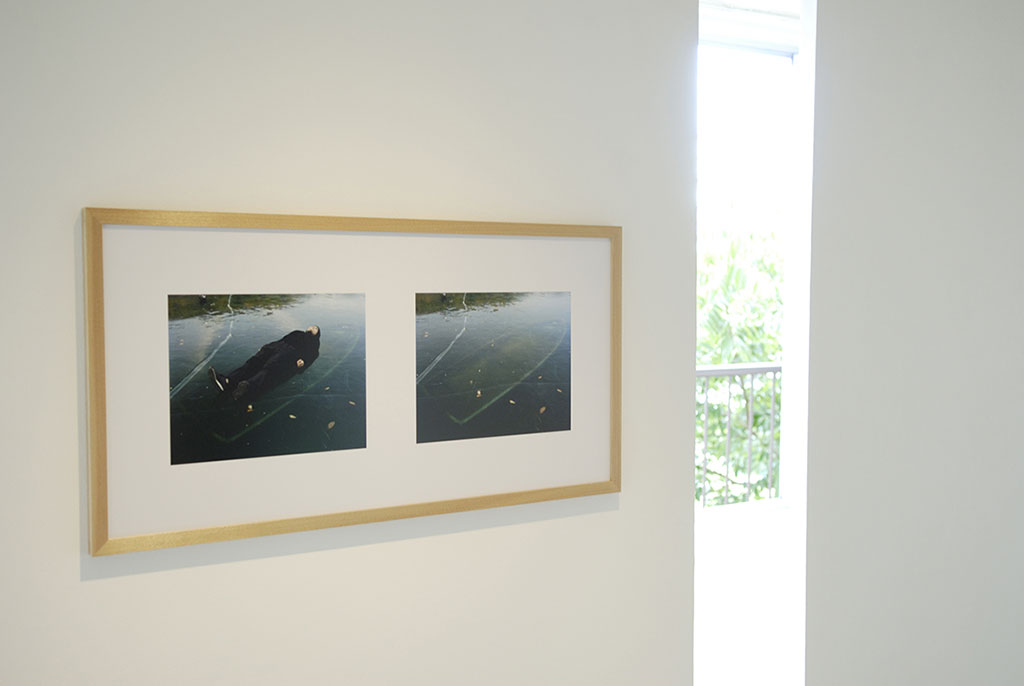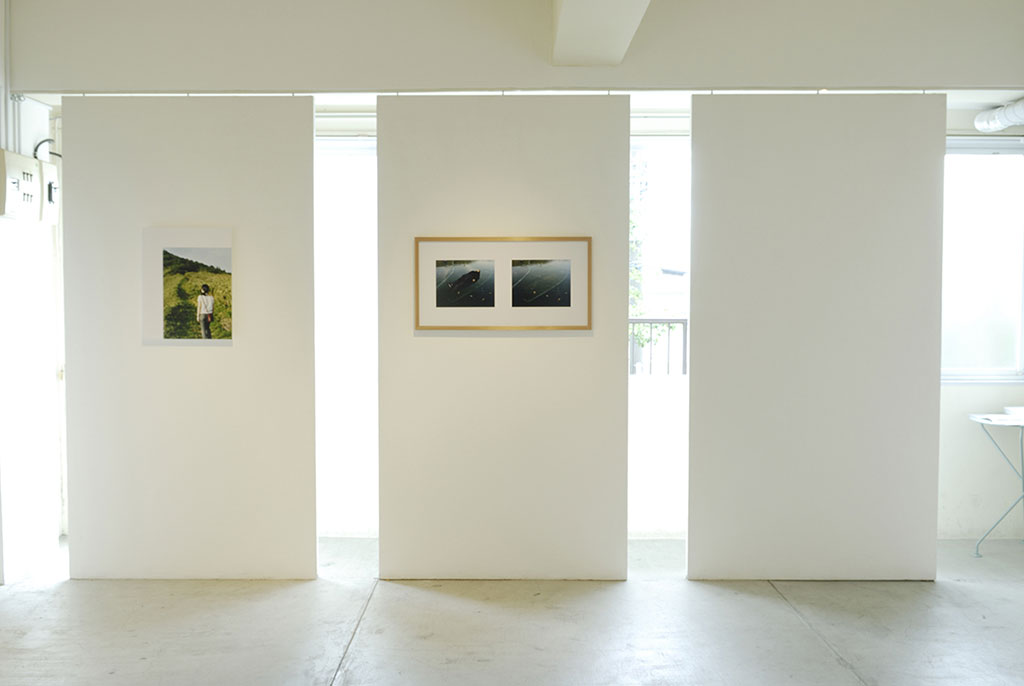夜の果てへの旅 / Voyage au bout la nuit, 2007
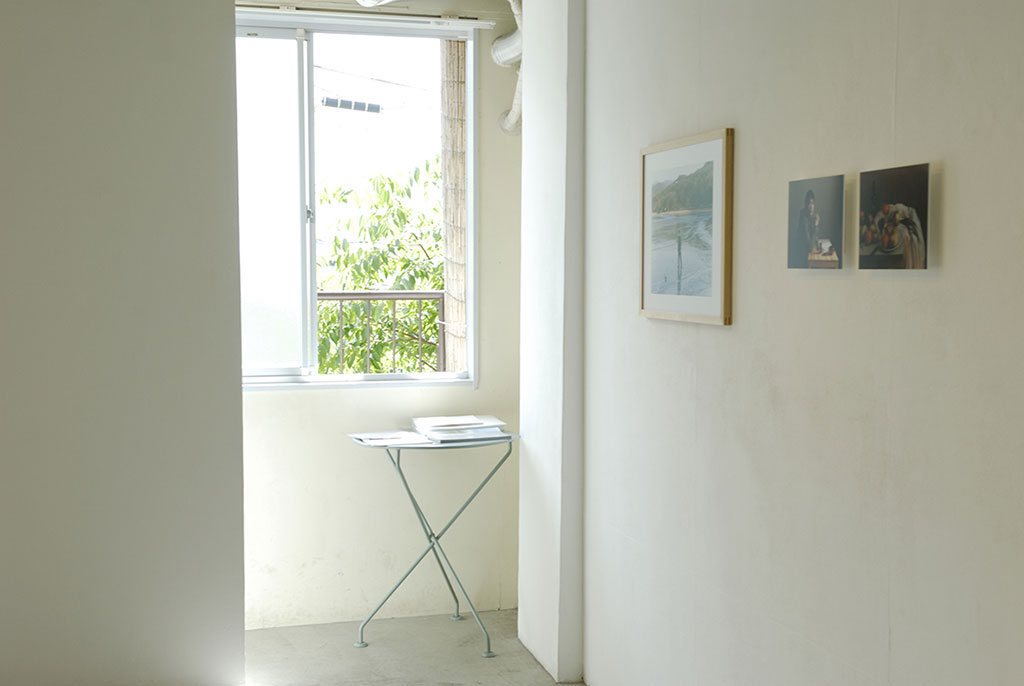
ルイ・F・セリーヌのデヴュー作と同名のタイトルの八田政玄の新作は、これまでの
彼の作品と同じように、奇妙な物語の気配に包まれています。ポートレート、ランド
スケープ、スナップショットなどで構成されるシークエンスが立ち上げようとする仮
構の物語。けれども、これまでの彼の作品がシークエンス全体を通して物語の気配を
浮かび上がらせたのに対して、今回の新作はどこか異なる印象が残ります。ひとつひ
とつのイメージの登場人物やシーンが、それぞれに物語を放散させている、そんな印
象が残るのです。それらの物語が示そうとするのは何なのか、そしてそれは誰の物語
なのか、あるいはそれはどこに向かおうとしているのか。物語の奇妙な引力が、観る
ものを惹きつけます。
現在、グレゴリー・クリュードソンに代表される、物語性を再構築しようとする写真
表現は、ポスト・ベッヒャーの重要な方法論のひとつとして注目を集めています。と
ころが、奇妙なことにわが国では、物語性を前面に出した写真表現への取り組みは盛
んではありません。とりわけ、ドキュメント性や私小説性ではなく、フィクションと
ドキュメントのあわいを漂うような物語性ということになると、ほとんど皆無と言っ
てもよいでしょう。そんななか、八田のアプローチは興味深いものです。ジェフ・
ウォールやクリュードソンのような大掛かりなものではなく、あえてその類例を探せ
ば、フィンランドの作家、エリナ・ブロテルスに近いそのスタイルは、物語性に対す
るヴァリエーションのひとつとして可能性を秘めています。ポスト・モダニズムが過
剰なまでに物語性を排除したことに対する反動として、物語性を再構築することがさ
まざまなかたちで試みられている今日、八田の試みも、そうした時代精神を呼吸して
生まれ出たものだといえるでしょう。
八田の作品に繰り返し登場する、どこということなく、遠くを見据える人物たち。彼
女あるいは彼が凝視めるものは何なのでしょうか。そこには、イメージに定着された
姿かたちがにおわせる物語性だけでなく、作家自身の揺るぎない意図という別種の物
語も立ち現れてくることになります。イメージに潜在している、コンテクストを生成
しようとする力。イメージの内部から、境界の外部に向かおうとする八田の登場人物
たちの視線は、コンテクストを生成する力を凝視めようとする八田自身の姿でもある
のかもしれません。セリーヌの主人公フェルディナンが、作者自身でもあるように、
彼の作品に数多く作者自身が登場するのもそのためなのでしょうか。いずれにして
も、ジュリア・クリステヴァの言うフェノテクス的なかたちで現象する作家の意図は
ユニークなものだといえるでしょう。
杉田 敦(批評家) art&river bank 展覧会テキストより
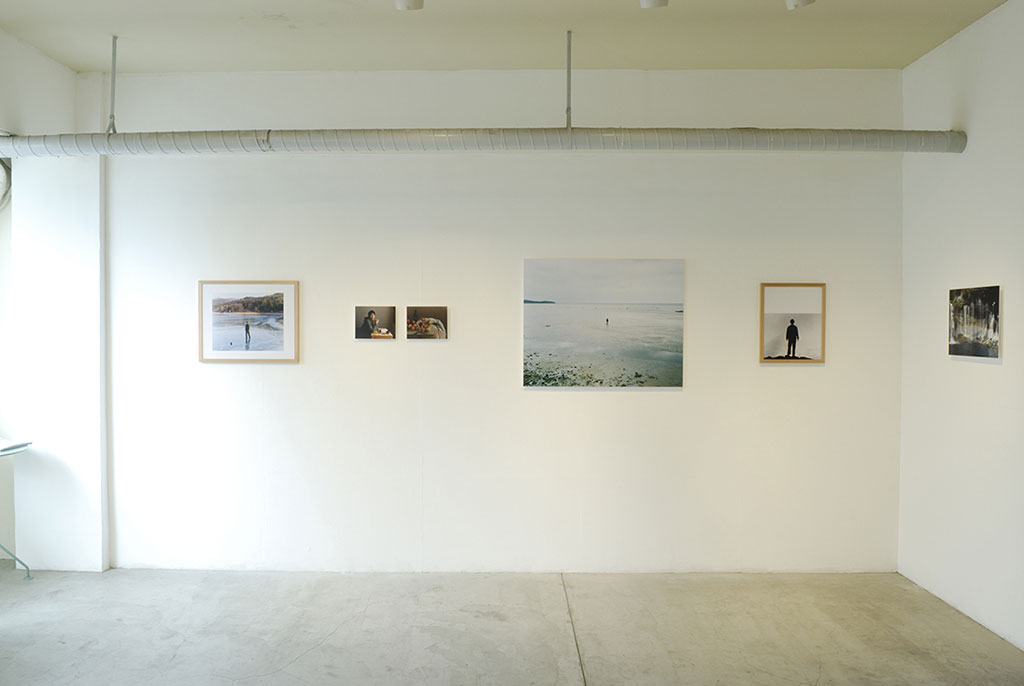
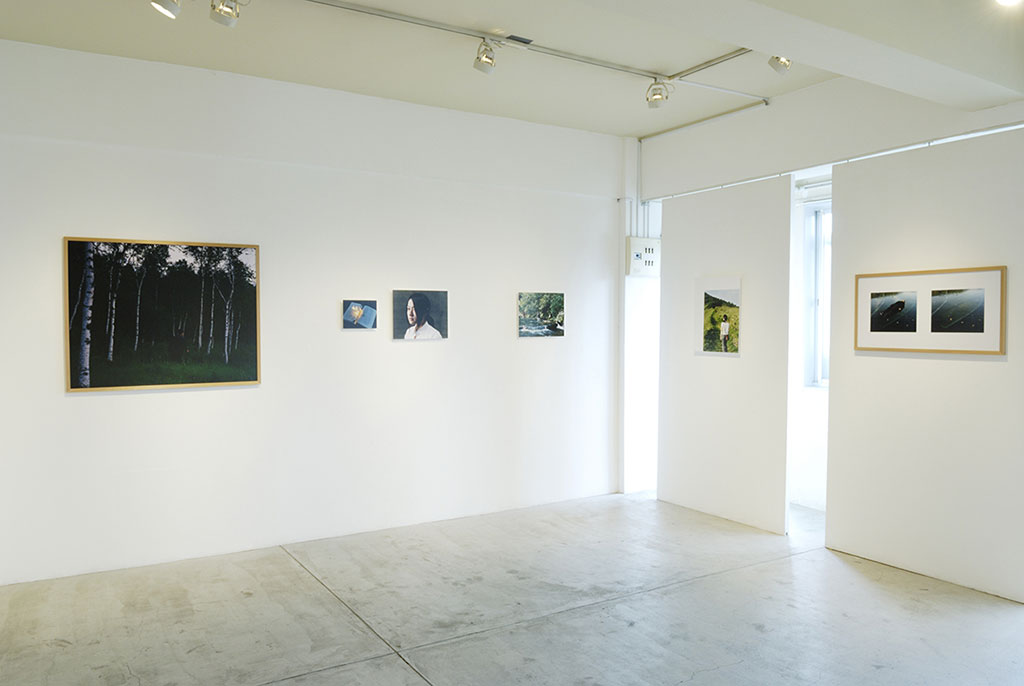
Masaharu Hatta’s new works, which were created under the same title as
Louis F. Celine’s debut novel “Voyage au bout la nuit,” are enveloped
within stories possessing a sense of oddity in a similar way as in his past
works. His works are imaginary stories that are manifested via a sequence
of images: portraits, landscapes and snapshots. But while his past works
were disclosed through indications of stories via this entire sequence, his
new works somehow leave a different impression on viewers. That is to say,
the characters and scenes that appear in the individual images of his new
works seem to diffuse their own respective stories.“What are these stories
alluding to?” “Whose stories are they?” “Where are they heading
toward?”?such questions might occur to one’s mind. Thus, an odd sense of
magnetism that is conveyed from his stories captivates the viewers.
Today, the type of photographic expression that reconstructs narrative
elements, as exemplified in the works of Gregory Crewdson, is gaining
recognition by being considered one of the significant methods in the
post-Becher school of photography. But strangely, in Japan, such
photographic expressions that are created by focusing on narrative elements
are not popular. In particular, there are hardly any such expressions when
it comes to the type that is neither of a documentary style nor of a
‘first-person novel’ style, but which exists somewhere in between fiction
and documentary style. In such a situation, the approach that Hatta
undertakes is quite interesting. His works are unlike the large-scale works
of Jeff Wall or Crewdson. If we were to seek a similar example, we would
find that Hatta’s style, which possesses the potential to be a variation of
the narrative form, is close to the works of the Finnish artist Elina
Brotherus. In the present state of art in which the reconstruction of
narrative elements are being created in a variety of forms as a reaction to
Postmodernism’s excessive elimination of those elements, Hatta’s works can
be considered the products of ‘breathing’ in the spirit of the age.
Repeatedly appearing in Hatta’s works are figures who have their eyes
aimlessly fixed in the distance?what is it that ‘she’ or ‘he’ is gazing
at? His works manifest the narrative elements that are implied by the
outward appearances fixated on the images, while also manifesting a
different type of story that derives from the solid aim that the artist
possesses. The force that works toward generating a context is latent in the
images?the eyes of Hatta’s characters that are directed from the inside of
the images toward the outer boundaries might also represent his own
appearance that aims to scrutinize the force that works toward creating a
context. Just as protagonist Ferdinand Bardamu of “Voyage au bout la nuit”
represents Celine himself, the reason why Hatta himself appears in many of
his works might be for similar reasons. Whatever the reason, it should be
noted that Hatta’s aim is unique in that it manifests itself in Julia
Kristeva’s ‘phenotext-like form.’
art&river bank exhibition text by Athushi Sugita (critic)
